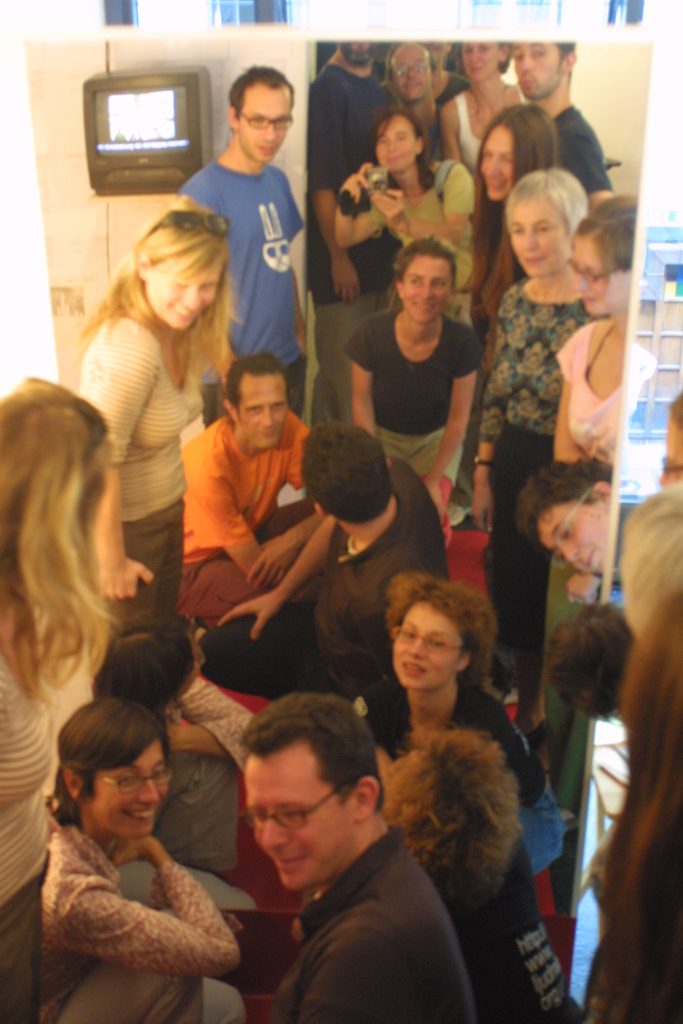Concept
The title Intermediate Spaces was borrowed from other usages (but almost none was conceptualized yet) for a double week long exchanges of artists with their projects from the cities of Graz and Ljubljana. Since both cities are of much the same size, they also produce similar self-sustained (urban) (sub)cultural structures. So we will most certainly see a kind of mirroring of the (human) roles and creations.
One could say that the Intermediate Spaces are almost a kind of meeting of the clones – or of a kind of teritorrial representatives / avatars. The people who create specific artistic areas within the local environments probably develop a very similar discourse – therefore the level of intercommunication could be much higher – and much more complete the presentation of such a discourse.
Discourse as used here means the structure of the understanding of the (artistic) fields we are involved in, or of the specific social needs. As usual, the artistic discourse is largely non-verbal, and transferred mostly as some sort of representation – the different modes of expression/ genres, as are concerts, exhibitions, performances and presentations. But to my view, not enough is done on the level of creation of the discourse – the structured verbal message, or: the exchange of ideas. Here we want to point especially to the articulation of ideas, that are always placed at the very beginning of the artistic creation/ production.
With the project Intermediate Spaces we also want to evade the isolated situation of the closed circle of people (”the family ties”). So we combine two groups of artists that have similarly active artistic and social stand, but coming from two different spaces. This is important since local environments are already overstructured (predefined on the non-verbal “para-family” level) – too “cultivated” for an open discourse to take place. The meeting would be a very intense combination of artistic creations, and also the articulation of ideas and opinions – not on the exclusivistic level of evaluation, but on the level of trying to understand and share (the ideas). It is therefore necessary (as John Cage put it) that the Intermediate Spaces are created by the individuals – themselves creators. So: not curators – but creators.
Intermediate Spaces should become the space of intense communication on the basis of immediacy of artistic creations/ experiences / challenges. It is a an open metaphoric space that exists before, during or just after the artistic action, almost at the moment when questions arise. Simple critical position or denial of some of the events would be a mistake. It would eliminate or at least narrow down the potential space of communication.
Intermediate Spaces can be understood also as temporal entity. It is the moment when the artistic language is not yet fully structured/ coded – but is plastic/elastic. This is possible only in the areas of art where artists still explore and the form is loose – not yet a genre. Some structure exist – but it is not yet fully verbalized. Artists are still free to explore – they are in the process of structuring their field. We would like to evade the skeletons of genres, so our choice of artists would be those of “free spirits and their work of constant research”.
Intermediate Space can also be the space in our minds where the thought is still possible. Not the ideology, but a space of analysis, deconstruction (and of construction). Also a space between the conceptual idea (the motive) and the artistic artefact – performance. The mind spaces are usually closed, they function on the level of ideologies, stereotypes, genres – preconceptions. In the event of confrontation of two firm thought systems there is no place for communication – only polarization. There is no intermediate space.
Along these lines of thought the Intermediate Spaces can be defined as an self-organized open-source (code) event. Lets play with the code.
 my RSS
my RSS
